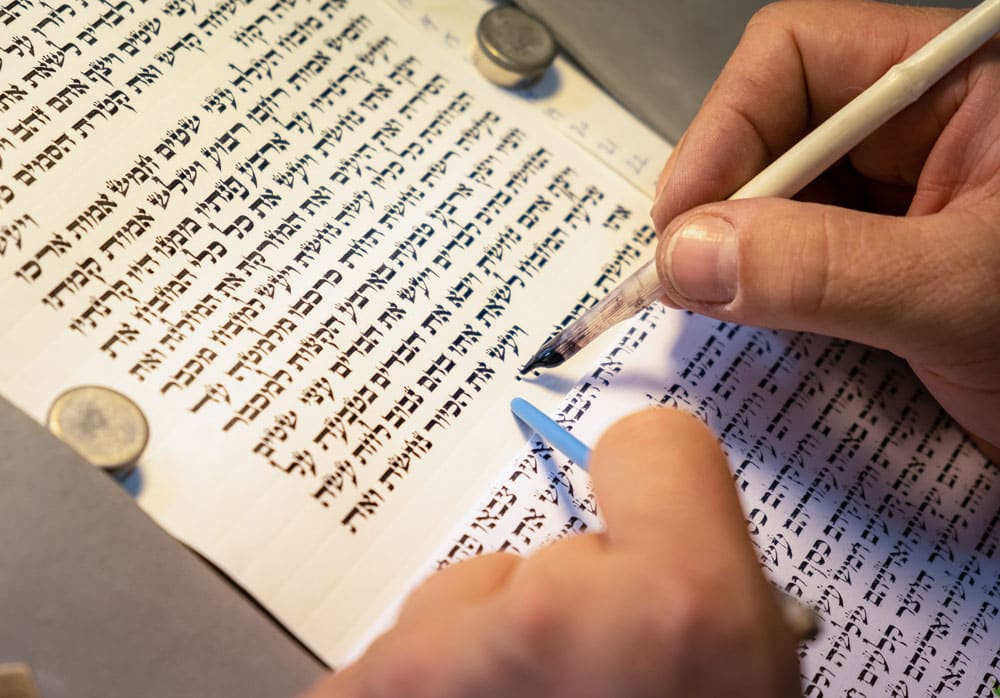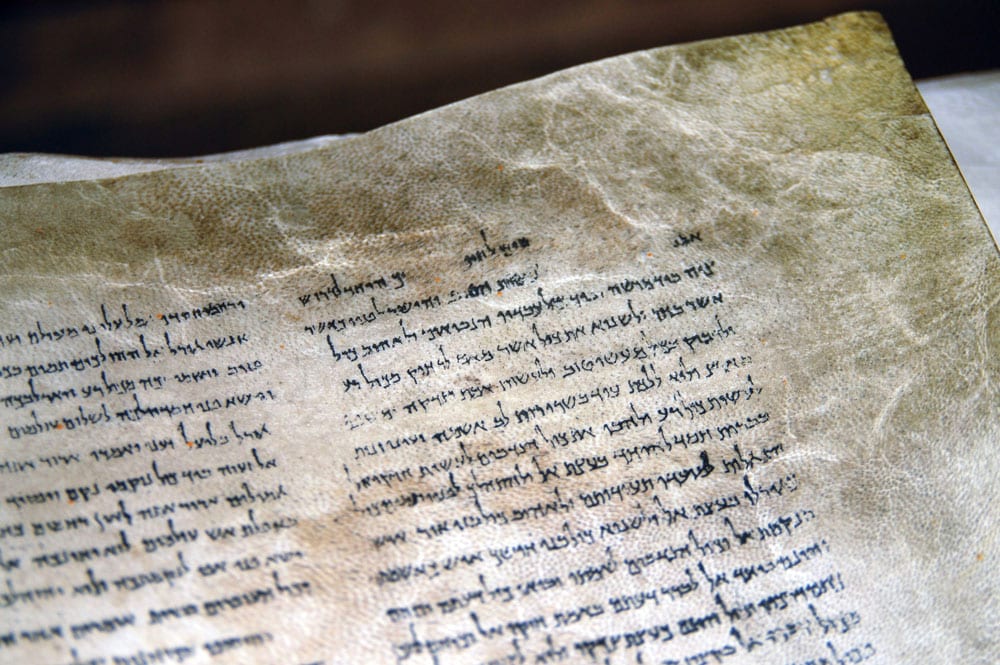Just how did we get our KJV Bible? In fact, many of us know very little about how we got the text of our Bible. What we know as the Old and New Testaments translated into English is the result of the detailed research and painstaking work that goes into making a Bible translation.
While we know it was originally written in ancient languages, we may not have considered the centuries-long process of preserving, compiling and translating the original manuscripts of the Bible. It’s no wonder the KJV translation team had six committees of nearly 50 men in total.
Let’s look at the process of translation and transmission of the Old Testament manuscripts in more detail.
Data Gathering
To bring a Bible translation to print, scholars sift through mountains of evidence in papyri, scrolls, fragments on parchment and vellum, manuscripts, various translations in different languages, and literally millions of quotations from early church fathers who cited Scripture in their writings.
This evidence is mainly written in Hebrew, Aramaic, Greek, and Latin, although early translations in ancient languages like Coptic, Syriac, Ge’ez, and Gothic must also be consulted. Then all of this evidence must be evaluated and hard choices made to produce a Bible in modern English. It is no wonder that a new Bible translation can take over a decade to complete with dozens of people working on it.
Compare and Contrast
Because we no longer possess the original biblical texts as written by authors like Moses, Jeremiah, John, and Paul, scholars must use all available evidence to discern as accurately as possible what the originals said. This process, known as textual criticism, compares and contrasts all the available data in producing what is believed to be an accurate English translation. Understanding the copying process that produced much of this early manuscript evidence is important in sifting through modern debates on which Bible translations are the best.

Preserving Old Testament Manuscripts By Hand
Everything we have in our Bibles today comes from copies of the originals, not the originals themselves, as they have been lost to us. Previous centuries didn’t have the wonders of digital technology and only since the middle of the 15th century did we have the printing press. In order to produce multiple copies of a book, scribes had to carefully copy them by hand.
Safeguards For Human Error
The Jews were the first to copy the Scriptures and were very careful in copying God’s words. For example, Jewish scribes would take an original scroll (e.g., Isaiah) and count through it to the 1,000th, 5,000th, and 10,000th words. Then in the copy they would do the same. If the words did not exactly correspond, they knew an error had been made in the copying process and they discarded the entire copy. By Jesus’ time, all of what we know as the Old Testament was compiled in a collection known as the Hebrew Scriptures (e.g., Luke 24:45), commonly referred to as the Law, Prophets, and Writings/Psalms (e.g., Luke 24:44). The Jews
Other safeguards against copying errors included limiting the number of columns and lines on any given page of a manuscript; using clean animal skins and a special black ink; verbalizing each word aloud as it was copied; copying letter-for-letter, not word-for-word; and reviewing copies within thirty days. If as many as three pages required corrections, the entire manuscript was discarded.

Accurate Results
This yielded copies that were as precise as possible. This has been confirmed by relatively recent discoveries like the Dead Sea Scrolls. Discovered in 1947, the Dead Sea Scrolls (dated between 100 BC and AD 100) predate our previously oldest Hebrew manuscripts by about 1,000 years. Included in the roughly 80,000 scrolls found in eleven caves are portions of the Old Testament except Esther, with Isaiah being the only complete Old Testament book found. The Dead Sea Scrolls prove that Jewish scribes did an excellent job in copying their Scriptures, as there are relatively few discrepancies between the Scrolls and existing Hebrew manuscripts.
In short, we have confidence that Bibles which we have today accurately reflect the originals (known as the Urtext) of the Old Testament writings.
The Masoretic Texts
During the early Middle Ages, Jewish scholars known as the Masoretes worked on preserving the Hebrew Scriptures (what Christians call the Old Testament). Working from earlier copies of their Scriptures passed down through the previous centuries, the Masoretes were able to produce a Hebrew text of the Old Testament, known as the Masoretic Text, between the 7th and 10th centuries.
Though we no longer have the original documents from which they worked, consistency in transmission of the Masoretic texts from the Middle Ages through to the 15th century has been proven.
As with Jewish scholars in the ages before Christ, the Masoretes took incredible measures to ensure that copies were as free from errors as possible, even discarding whole copies that had one error.
To that point, in 1970, a small fragment of the book of Leviticus was discovered in what is known as the En-Gedi Scroll. Carbon dated to the 3rd or 4th century, this fragment agrees perfectly with the Masoretic Text, reinforcing the belief that the Masoretes produced a trustworthy Old Testament.
The Masoretic Text provided the basis for the translation of the Old Testament in the King James Version, as well as most modern Protestant versions of the Bible.
Two Masoretic Manuscript Examples
Kept in a library in St. Petersburg, Russia, the Codex Leningradensis (or Leningrad Codex) is an early 11th-century Hebrew codex (“codex” simply means book, as opposed to a scroll) of the complete Old Testament. Made in Egypt, it is the oldest complete Masoretic text we have.
The Aleppo Codex is our oldest Hebrew manuscript but it is incomplete, missing the majority of the Pentateuch and 193 of an estimated 487 pages. Originating in Tiberias, Israel, around AD 930, this codex found its ways to Aleppo, Syria, where it was kept until the middle of the 20th century. After anti-Jewish riots there, the codex was moved to the Israel Museum.
An Authoritative Old Testament
Currently we have over 300 Old Testament manuscripts to cross reference in developing an Old Testament Hebrew text from which we can create an English translation. Modern translations have the benefit of 400 years of discoveries of new evidence with which to cross reference, with numerous sources not available to the King James translators. While there have been many more discoveries of ancient manuscripts since the King James Version was published in 1611 (e.g., Dead Sea Scrolls), the source manuscripts used to create the Old Testament of the King James Bible remain very similar to the ones used for modern translations like the New International Version and English Standard Version.
The New Testament manuscript situation is far more complex. Read about this in our next article on manuscripts used in the KJV.

